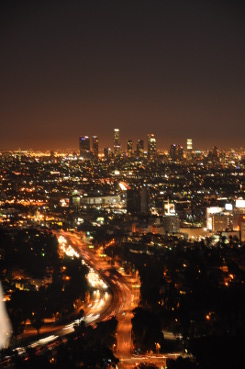

What are the different kinds of personal injury claims that plaintiffs commonly sue for in Southern California?
A small sample of the many forms of personal injury claims are described below. If you are being sued as a defendant for personal injury or have been injured yourself, please contact our firm for a quick consultation with an attorney.
Car Accidents Personal Injury Claims
Automobile accidents are one of the most common sources of personal injury claims. When an individual is injured in a car accident, he/she may be able to recover from their insurance company, other drivers, public entities that are responsible for maintaining the roads, and/or other entities/individuals. If the other driver is at fault, the injured party may be able to sue the other driver and recover money from the other driver's insurance and possibly that driver's personal assets. Car accidents can involve major bodily injuries, as well as damage to property (e.g., the vehicle and personal property inside of the vehicle).
An injured party may also be able to sue the public entities are responsible for maintaining the road on which the accident took place. Similarly, the injured party may be able to sue the public entity responsible for maintaining other things, such as road barriers, signage, and other items on the side of the road. The key thing to remember with claims against public entities in California is that you first need to file a government tort claim within six months or less. Failure to timely file the correct claims can lead to completely losing any right to file a lawsuit in the future to recover damages against the public entity. This is why it is crucial to act fast when you believe that a public entity may be responsible for your injury.
Multiple personal injury claims arising out of car accidents are filed every day in courts across Southern California. They occur frequently. For defendants, these lawsuits can be costly if they are not handled by effective representation. For plaintiffs, these lawsuits can lead to recovery of substantial money damages.
Personal Injury in the Product Liability Context
When an individual is injured because of a defective product (whether it be a car, piece of farm equipment, a household appliance, or any other product), the injured person may be able to sue distributor for damages.
Product liability cases commonly arise out of automobile accidents. A problem with a vehicle causes the driver or passenger(s) to crash or otherwise get injured, the injured party may be able to sue the manufacturer/retailer/distributor. For example, if a vehicle's brakes failed, causing a driver to crash into another vehicle and get injured, the injured party will be able to sue a vehicle manufacturer for his injuries if it can be proven that the vehicle's design was defective. As another example, if a driver crashes his/her vehicle and is injured because the air bag didn't deploy, the injured person may be able to sue the manufacturer for his injuries (even if the driver is at fault!).
Personal Injury in Medical Malpractice
Medical malpractice (also known as medical negligence) is a form of professional negligence by a healthcare provider of where the treatment, diagnosis, or care given falls below the accepted standard of practice in the medical community and causes injury or death to the patient. Medical malpractice claims are very common in Southern California.
Unfortunately, doctors do make mistakes, and these mistakes can end up causing serious bodily harm to patients. Medical malpractice itself comes in many forms. To list a few examples: patients can be injured by errors in a surgery, they can be injured by a nurse's failure to provide the proper care, they can be injured when giving birth, and so on.
If it can be shown that the injuries were caused by the health care provider's failure to provide the proper standard of care, an injured person can recover money damages from the health care provider.
As of the writing of this article, California law limits recovery of non-economic damages (which includes pain and suffering, or the emotional damages) in all medical malpractice cases to $250,000. There is no limit on economic damages (medical bills, lost earnings, etc.), which can be in the millions of dollars. There have been initiatives to increase the $250,000 cap on non-economic damages, and one day that limit may be raised.
Pedestrian Accidents
Pedestrian accidents are common, especially in major metropolitan areas in Southern California like Los Angeles, Orange County, San Diego, etc. Probably the most common source of pedestrian injury accident is collisions between motor vehicles and bystanders. Pedestrian accidents can occur under any circumstances, including:
- A driver fails to yield or give right of way to a pedestrian.
- Driver loses control of the vehicle.
- Driver fails to obey traffic laws.
- Driver runs a red light.
- Driver doesn't use headlights where necessary.
- Driver is driving unsafely for the road and weather conditions.
Premises Liability Personal Injury Cases (Includes "Slip and Fall" cases)
Premises liability is the liability of a landlord for certain facts or omissions that occur on their real property. Premises liability can arise from various situations, including:
- A landlord's failure to fix a dangerous condition;
- The use of substandard materials in performing repairs/construction;
- Injury that is caused by the landlord's failure to maintain a building per the applicable building code in Southern California;
- Landlord fails to provide sufficient security;
- A fire on the property causes injury/damage;
- The property is not properly lit;
- The property is chemically hazardous;
- There is some kind of physical defect in the property (cracks in the floor, uneven floors, etc.);
- Slip and fall accidents.
The following are some of the things that will need to be established for a landlord to be held liable for an individual's injuries:
-
1. The party being sued (the defendant) must possess the land/premises.
2. The defendant must have acted negligently or performed some other wrongful act. This can even include the wrongful act of a third party on a landlord's property. For example, if a patron of a mall is attacked by an unrelated third party, the injured mall patron may be able to sue the owner of the mall for his injuries.
3. The plaintiff was harmed.
4. The defendant's negligence was a substantial factor in causing the plaintiff's harm.
Birth defects caused by medical malpractice, exposure to chemicals, genetic testing, or the negligence of a third party and be grounds for a lawsuit. Indeed, birth injury lawsuits are filed in Southern California courts frequently. According to the Centers for Disease Control and Prevention, about one in every 33 babies (about 3%) is born with a birth defect. Birth defects account for more than 20% of all infant deaths. The CDC identifies the following birth defects:
- Anencephaly
- Spina bifida without anencephaly
- Encephalocele
- Anophthalmia/microphthalmia
- Common truncus
- Transposition of great arteries
- Tetralogy of Fallot
- Atrioventricular septal defect
- Hypoplastic left heart syndrome
- Cleft palate without cleft lip
- Cleft lip with or without cleft palate
- Esophageal atresia/tracheoesophageal fistula
- Rectal and large intestinal atresia/stenosis
- Reduction deformity, upper limbs
- Reduction deformity, lower limbs
- Gastroschisis
- Omphalocele
- Diaphragmatic hernia
- Trisomy 13
- Trisomy 21 (Down syndrome)
- Trisomy 18
Not only can these birth defects be emotionally challenging for a family to face, but they can also cost families hundreds of thousands of dollars over the child's life.
In cases where defects are caused by the fault of another, families often seek to recover from the responsible individuals/entities by filing lawsuits. If parents believe that their child's birth defect was caused by medical malpractice, they should consult experienced attorneys immediately. In birth injury cases, it is possible to get compensation for past and future medical expenses, past and future loss of earnings, as well as pain and suffering damages.
Wrongful Death Actions in California
What is a Wrongful Death action? Wrongful death is a type of civil action in which damages are sought against a party who caused a death by a wrongful act or negligence. Wrongful death causes of action can arise where an assailant intentionally attacks and kills the victim or in situations where the responsible person accidentally causes the death of another (e.g., a drunk driver hits and kills a pedestrian).
Wrongful death claims are brought by the surviving beneficiaries or dependents of the deceased victim. In wrongful death actions, plaintiffs claim that the victim died as a result of the inclusions or other wrongful act of a defendant. The surviving beneficiaries or dependents can sue to recover compensation in the form of money damages as a result of the defendant's actions.
Elements that need to be proven for Wrongful Death cases. Under California law, in order to prevail in a wrongful death action, plaintiffs must prove: (1) that the death was caused by the negligence or conduct of another, and (2) that the heirs suffered damages (and the extent of the damages must be proven).
Order of Claimants in Wrongful Death cases. In the case of a death of a child, the heirs who sue in court are the parents. In the case of the death of a married adult, the heirs are the spouse and any children. In the case of a death of an unmarried adult, the heirs would be the children (if any), followed by the parents, and then the siblings. Broken down, the order of precedence in which claimants can recover in a wrongful death action in California is as follows:
-
1. First in line: the surviving spouse, children, and surviving issue of the deceased children share the right to damages jointly and severally (they share a single claim for damages).
2. Next in line: the deceased's parents, which are then followed by the brothers and sisters, children of the deceased brothers and sisters. They are then followed by the grandparents of the descendent, and then their descendants.
Other Examples
Other examples of personal injury claims include bicycle accidents, boating accidents, burn injuries, defective products/drugs, dog bites, drunk driving accidents, motorcycle/ATV accidents, taxi cab incidents, train crashes, trucking accidents, worker's compensation, and many more.
You can reach an attorney at Theta Law Firm by calling us or sending us an email at law@thetafirm.com. Theta Law Firm can represent clients all across the State of California, including in any of the following counties: Alameda | Alpine | Amador | Butte | Calaveras | Colusa | Contra Costa | Del Norte | El Dorado | Fresno | Glenn | Humboldt | Imperial | Inyo | Kern | Kings | Lake | Lassen | Los Angeles | Madera | Marin | Mariposa | Mendocino | Merced | Modoc | Mono | Monterey | Napa | Nevada | Orange | Placer | Plumas | Riverside | Sacramento | San Benito | San Bernardino | San Diego | San Francisco | San Joaquin | San Luis Obispo | San Mateo | Santa Barbara | Santa Clara | Santa Cruz | Shasta | Sierra | Siskiyou | Solano | Sonoma | Stanislaus | Sutter | Tehama | Trinity | Tulare | Tuolumne | Ventura | Yolo | Yuba
